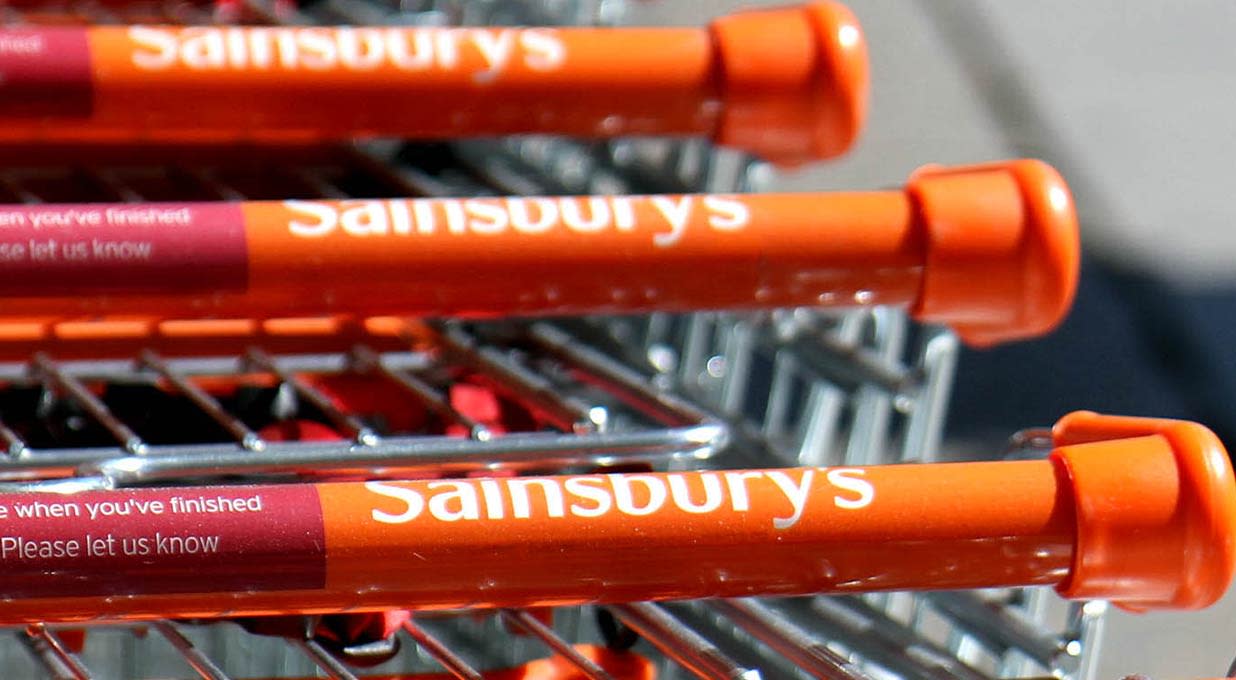Sainsbury’s like-for-like Retail sales, excluding fuel, were up 3.4% to £16.3bn. The uplift was driven by higher Food volumes “across all major categories”, with total food volumes growing at a faster pace than the broader market.
General Merchandise & Clothing sales fell by 1.5%, reflecting softer demand for consumer electronics and toys, which more than offset a small improvement in clothing sales.
Retail underlying operating profit rose 3.7% to £503mn. This was driven by the top-line growth and ongoing cost cuts, which helped to offset rising operating costs.
Retail free cash flow fell from £520mn to £425mn. Net debt, including leases, stood at £5.6bn at period-end.
Full-year Retail underlying operating profits are expected to land between £1.01-£1.06bn, up 5-10%.
An interim dividend of 3.9p per share was announced, in line with last year.
The shares fell 1.1% in early trading.
Our view
Sainsbury’s first-half results were robust enough. Sales growth was driven by higher food volumes, which grew at a faster pace than the broader market as the group worked hard to keep its prices down.
We’re supportive of Sainsbury’s progress. The supermarket continues to scoop up market share, in large part due to a herculean effort to improve products, value perception and innovation more generally.
Grocers have been forced to up their game as competition in the industry reaches fever pitch thanks to the upwards march of Aldi and Lidl. And while Sainsbury's value-led strategy has paid off, offering value doesn't come cheap.
Those in the middle of the market, like Sainsbury's, are most exposed in these tough times. It means the group has no choice but to get its hands dirty and fight for customers. Credit where it’s due – things like Nectar prices and Aldi price matches are working at plugging the exit of customers.
That’s important because for all Sainsbury’s excellent work in its core retail business, it is more exposed to general merchandise thanks to its ownership of Argos. Consumer electronics aren’t faring well in this economic climate, as people prioritise the essentials. General merchandise is the most cyclical area of the supermarket economy to be in, so being overweight in this arena really slows you down when times get tough.
The top-line growth and efficiency improvements have been enough to keep profits moving in the right direction so far. But Sainsbury’s CEO flagged that the changes to employers' National Insurance contributions would cost around £140mn, and that’s before the impact of hikes to the national minimum wage are felt.
That’s a lot of extra money to find and it could put pressure on profits in the near-term. To help offset this impact, it’s very likely that prices at the till will have to go up. While Sainsbury’s peers are all in the same boat, it does mean competition on prices looks set to intensify.
The balance sheet remains in good shape, with the ratio of net debt to cash profit (EBITDA) sitting towards the lower end of its target range. And with strong cash flows, there’s plenty of weight behind the group’s prospective 5.3% dividend yield. Shareholder returns should also receive a boost of at least £250mn, following the decision to sell core Sainsbury’s Bank assets to NatWest. But remember, no shareholder returns are guaranteed.
Overall, Sainsbury’s has done just about all it can to better itself, and it should be commended for that. The valuation isn’t anticipating much in the way of more improvements. Nonetheless, the very real threat of a price war in the space means further volatility can’t be ruled out.
Environmental, social and governance (ESG) risk
The Food and Beverage industry is medium risk in terms of ESG, with some subsectors - like agriculture, tobacco and spirits - falling into the high-risk category. Product governance is an area of concern industry wide due to strict quality and safety regulations and incoming environmental regulations. Other risks vary by sub-industry, but human capital, data privacy and security, community relations and resource use tend to impact most companies in this sector either directly or through their supply chains.
According to Sustainalytics, Sainsbury’s management of ESG risks is strong.
An area of strength is the fact that the group’s executive pay is explicitly linked to ESG performance targets. However, within that, the group’s ESG disclosures aren’t in accordance with leading reporting standards, in particular the environmental policy is weak. This is significant given the group’s extensive packaging and freight usage. The group’s large scale puts it at increased risk of scrutiny when it comes to product reputation, and is something to monitor as customer appetites lean more towards sustainable options.
J Sainsbury key facts
All ratios are sourced from Refinitiv, based on previous day’s closing values. Please remember yields are variable and not a reliable indicator of future income. Keep in mind key figures shouldn’t be looked at on their own – it’s important to understand the big picture.
This article is not advice or a recommendation to buy, sell or hold any investment.No view is given on the present or future value or price of any investment, and investors should form their own view on any proposed investment.This article has not been prepared in accordance with legal requirements designed to promote the independence of investment research and is considered a marketing communication.Non - independent research is not subject to FCA rules prohibiting dealing ahead of research, however HL has put controls in place(including dealing restrictions, physical and information barriers) to manage potential conflicts of interest presented by such dealing.Please see our full non - independent research disclosure for more information.


